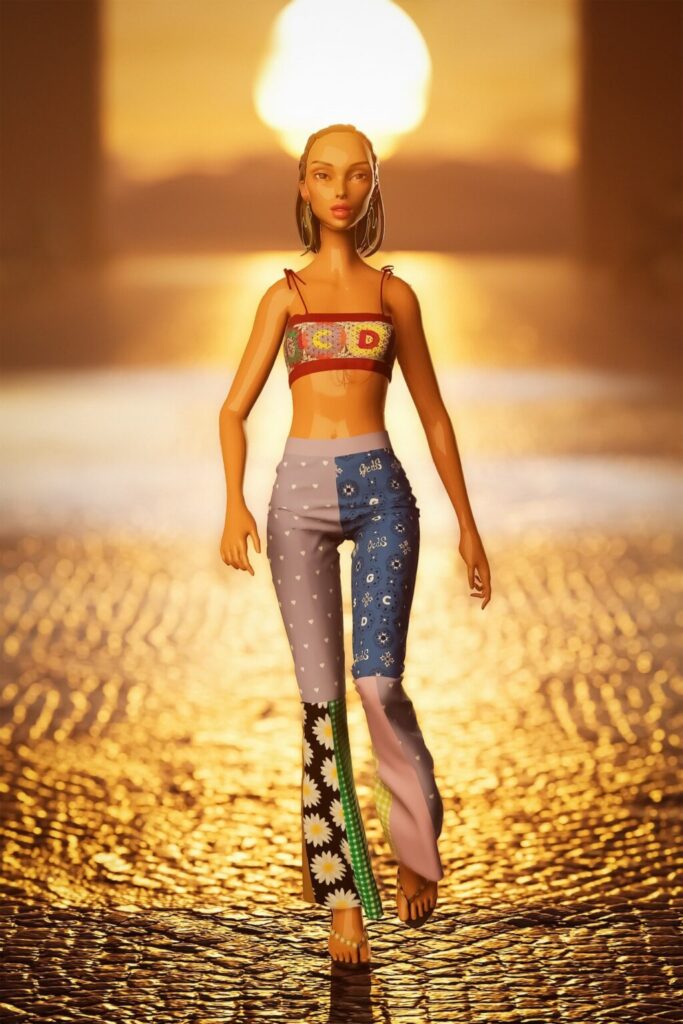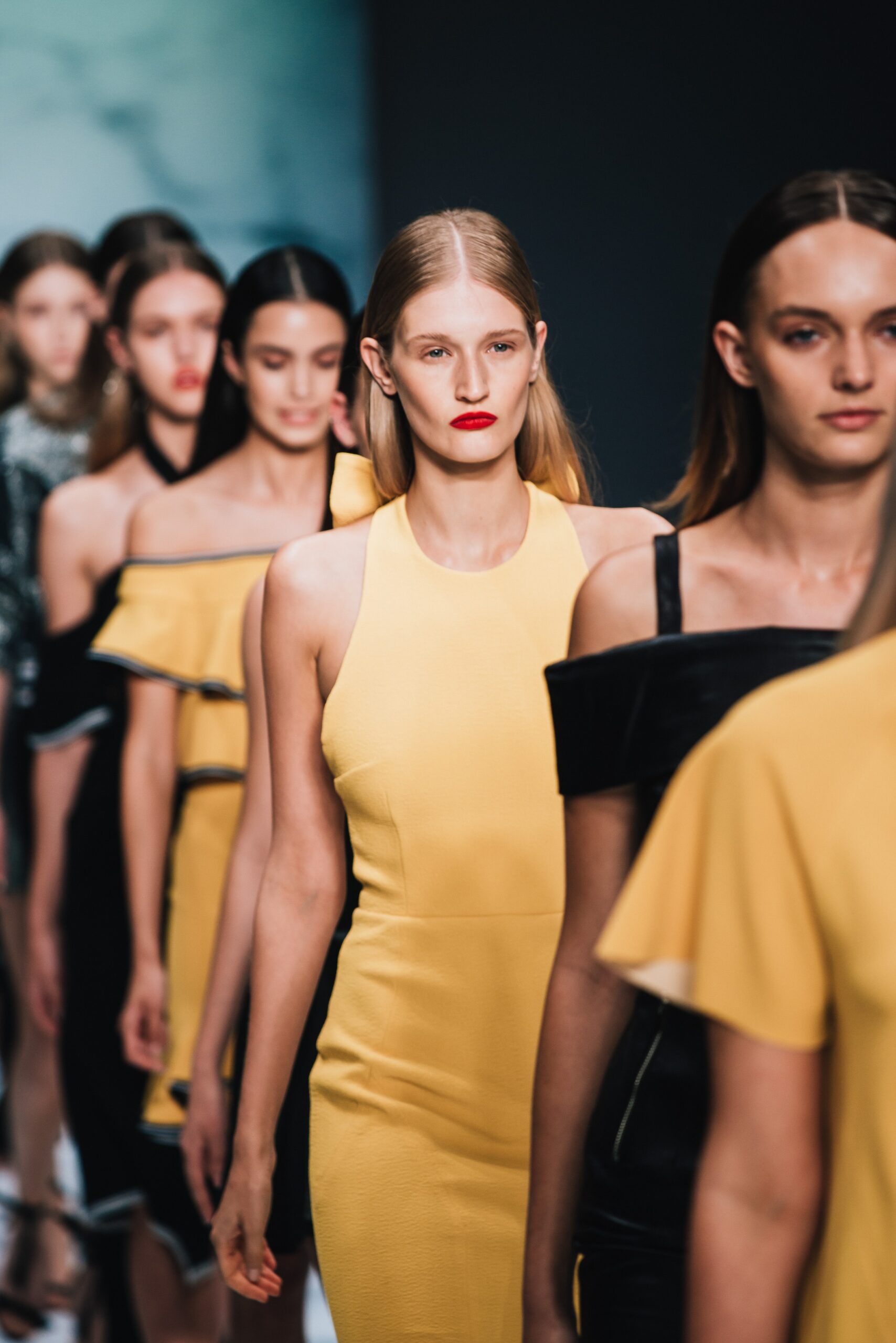“COVID-19 is forcing brands to engage and experiment with immersive technologies. We’ve been inundated with requests on how to create virtual clothing, virtual catwalks and virtual showrooms”.
That is what Matthew Drinkwater, Head of Fashion Innovation Agency, says about what the fashion industry has been facing up to now.
The Fashion weeks, this year, have responded to the needs imposed by the pandemic such as the loss of certainties, the impossibility to travel and the need for social distancing.
Many famous brands have inevitably suffered from heavy losses, especially at the beginning of the closures. The situation described by McKinsey and The Business of Fashion at the beginning of 2020 is more than dramatic. China’s sales dropped significantly at the beginning of the year, while in Europe and in the US the worst came in March. The decline in profit is estimated around 90% for 2020, after the 4% rise that had fueled the hopes in 2019.
The melting of fashion with the digital world in this uncertain environment has shown to be essential, even though it would have been hard for us to imagine before COVID-19.
Particularly interesting, when talking about this wave of development, is the role that technology, videogames and social networks have played throughout the recent fashion weeks.
Fashion weeks and the virtual catwalks.

GCDS, fashion and videogames.
A perfect example of this tension towards the future and the renewal is the virtual catwalk offered by GCDS.
Giordano and Giuliano Calza have managed to put into stage a 3D fashion videogame show, that was held on Thursday, 24th September 2020.
The technique adopted aimed at providing an encounter with the clothes that, shown virtually on display, loses an essential aspect: the experience.
The new pieces of clothing were designed and made in a paper model version, and then digitized in a way that could render justice to the actual volumes.
The engineers perfectly achieved their aim of producing consistent garments; these were moving giving a strong sense of dynamism, in a utopic context that overcomes the physical barriers in an atmosphere of dream and renaissance.
Burberry and live streaming
Another important step toward the digitalization of the sector is the one moved forward by Burberry, which has chosen to publish the live streaming performance of its catwalk, on the well-known streaming platform Twitch. The show was one hour long and counted 42.000 viewers.
This new collaboration makes Burberry more and more innovative, in a way that tries to engage with people, in particular with GenZ, to make them feel like they actually have a seat in such fancy shows. What made it even more engaging was that they adopted the “squad stream mode”, so that many celebrities could give their point of views. It is a strategy that helps the community feel closer to the firm, and makes new potentialities of Twitch emerge. Basically it was born for gamers, but Burberry showed the world how luxury can gain some space there too.

Armani, on live television
«We are talking about democratization, and what could be more democratic than television?»
This is what Giorgio Armani said, when interviewed by an italian newspaper.
Talking about entering into everyone’s house, what Giorgio Armani did marks a unique, important step toward the aforementioned direction of inclusion and closeness to the potential clients.
In fact, the firm’s new collection was presented on La7, a channel on the Italian national tv. It has been a pioneering choice, since the spectators of the television were all invited to enter such a fancy, unique dimension, generating a strong sense of community and belonging toward the Italian brand.
This choice rewrites the perception of the fashion weeks as we have known them up to now and aims at including wider slices of the population in such a crystal world.
Television and fashion have never been too close over the years since the latter has always been more experimental and less widespread, but it is quite interesting to notice how this is adapting to the evolving society.
However, it is to be considered that not all brands were ready to embrace such a courageous path, going hundred percent virtual, while others just preferred to stick to the traditions, in order to preserve their ideas and values about fashion.
From my standpoint, under this respect, fashion weeks lacked proper coordination and unity. Looking on the bright side of the coin, however, variety could also be considered as the original and enriching part of the events.
Clinging to traditions
Jason Wu, high fashion meeting everyday life.
A stunning example among those is Jason Wu. However, his choice definitely cannot be defined as traditional. He has decided to build a set for his catwalk, that resembled the lanes of a supermarket: Mr. Wu’s General store. Interesting choice, and the metaphor is easy to understand just considering how significant such a place has been during the past year, with the pandemic.

Etro and Dolce: solidity and stability.
On the contrary, brands such as Etro and Dolce & Gabbana tried to propose the usual catwalks, minimizing the number of people invited, in an intimate atmosphere. All the safety measures were adopted in order to sanitize the locations chosen, and to guarantee social distancing.
It feels natural to me to ask whether it actually made sense, this year, to cling to a format that was based on certain pillars and on socialization, depriving the events of the mundane and social aspect.
On the other hand, the desire of supporting the canon of tradition was clearly manifested, in a sort of attempt to rescue people, giving them stability and solidity.
Where to next?
Weeks have passed since the fashion shows have finished, so it could be the right time to wrap up, and to reflect on what we lived. Many have declared to be unsatisfied with what has been put into stage because the attention shifted too much from the clothes and the perception of the clothes, to the show and the struggle for innovation. Furthermore, oom is considered by many to be a bare reproduction of reality, that cannot stand the competition with the stunning events of fashion weeks.
Personally, it was definitely interesting to notice how fashion and technology have blended together, even though not always perfectly smoothly, but surely successfully. In particular, I appreciated how many brands invited people to their magical world.
Trying to understand what the next steps of this industry will be, after this massive change, is no easy task. For sure, we can expect this huge wave of development to not stop surprising us soon.
Further Readings:
- Predictions for 2021: State of Fashion | McKinsey
- Anna Wintour (Vogue’s director) interview with Naomi Campbell: Anna Wintour on Why She Pushed for Naomi’s First American Vogue Cover | No Filter with Naomi – YouTube

Leave a Reply